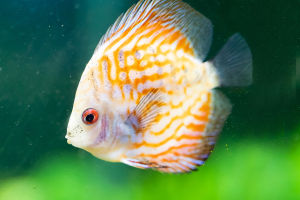A jellyfish is a marine creature and a very good looking creature.
They are more attractive in shape, generally umbrella-shaped, and have some tentacles.
Also, their colors are very nice.
There are many different species of jellyfish, these different species of jellyfish will have different colors, and the overall color is very diverse.
For example, the moon jellyfish in the bowl jellyfish, the size of this species is relatively large among all jellyfish, and their color is blue.
Another example is the comb jellyfish.
Their shape is generally more beautiful than the shape of the bowl jellyfish, and their colors are more diverse, some are transparent, some are red, and some are blue.
There are also more common man-hatched jellyfish, their shape is more like a hat, so named, their colors themselves are more diverse, there are purple and blue.
When observing jellyfish in an aquarium, we may observe their discoloration.
But in fact, jellyfish do not change color.
The phenomenon of discoloration we observed is only the effect of light.
Although jellyfish does not change color, it emits light.
This is because there is luciferin or luciferase in jellyfish, which will emit light after oxidation.
However, the jellyfish's light-emitting system is different from other animals.
It relies on a wonderful protein called equimin to emit light.
When Equimin encounters calcium ions, it emits a strong blue light.
Calcium is an ion necessary for the movement of organisms, and there is a certain amount of storage in body fluids and cells, so as long as the jellyfish is alive, it will always emit light.
The largest Xia jellyfish is the Arctic Xia jellyfish distributed in the Atlantic Ocean.
Its umbrella cover can reach 25 meters in diameter.
The lower edge of the umbrella has eight sets of tentacles, each with about 150 tentacles.
Each tentacle stretched for more than 40 meters, and it could shrink to only one-tenth of its original length in one second.
There are stinging cells on the tentacles, which can turn out the barbed wire radiotoxin.
When all the tentacles are stretched out, it is like a net covering an area of 500 square meters.
Once any ferocious animal is thrown into the net, it will be captured.
The Xia jellyfish's snare is powerful, but it can't help the little shepherd fish.
The shepherd fish is no more than seven centimeters long, and can move freely among the tentacles of the Xia jellyfish, making it a good refuge.
The shepherd often lures some small predators into the snare set by the master, and he cleverly avoids the poisonous silk, gets under the giant umbrella, and escapes the attack.
At the same time, Xia jellyfish took the opportunity to collect nets to catch fish and have a delicious meal, and shepherd fish was rewarded by the master for seducing the enemy and ate some trivial food.
Xia jellyfish and shepherd fish live together for mutual benefit.
The jellyfish protects the life of the herd, and the herd helps it lure its enemies and remove microbes from its body.


